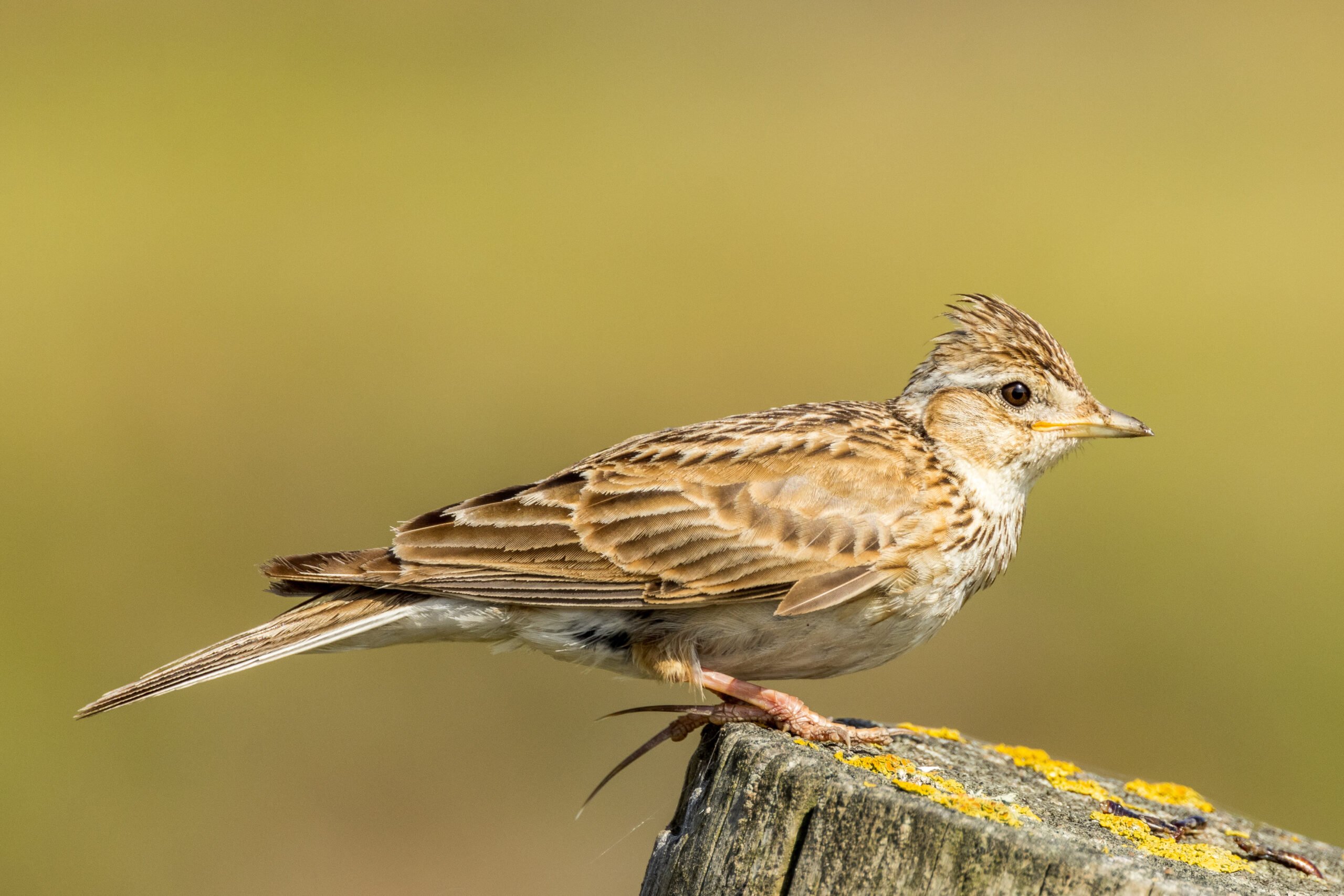

In spring, the liquid warbling song of the skylark is a welcome signal of warm, summer days ahead and is a ubiquitous feature of the UK countryside. However, this emblematic sound is at risk of disappearing, given declining skylark numbers in recent decades. Skylarks are red listed under the Birds of Conservation Concern framework and the British Trust for Ornithology (BTO) have reported declines of 63% across England during the period 1967 – 2016. Agricultural intensification is the main driver of skylark declines and has negatively impacted many ground nesting species reliant on farmland habitat. Skylarks need seeds, vegetation, and insects to feed on and suitable areas to nest to survive and reproduce successfully. However, increasingly intensive management practices and the transition from spring-sown to autumn-sown crops reduces their food supply and creates less favourable nesting conditions.
Skylarks can be found on agricultural land which is also suitable for solar farms and consequently, there is concern surrounding potential impacts. Preferring to nest in open fields, away from tall structures, skylarks need clear sight lines in order to spot predators. The presence of solar arrays is therefore not conducive to nesting by skylarks.
But whilst confirmed nesting on solar farms has, to date, not been recorded, skylarks foraging for their summer staple of invertebrates such as spiders have been observed. Ecological consultancy reports state that skylarks were present on 50% of solar farms monitored in 2019 and on 31% of sites in 2020, including several foraging birds. Unpublished data collated by Solar Energy UK from more than thirty solar farms in 2022 support these observations, with skylarks present on 51% of sites surveyed, including some exhibiting foraging behaviour. It is thought that appropriately managed solar farms which emphasise grassland diversity could act as optimal foraging habitat, and in turn improve outcomes for off-site nests in
territories adjacent to solar farms. Some of the skylarks were also observed singing from solar panels to advertise a territory. But in the absence of any confirmed nests, this suggests there may be a ‘nest site fidelity’ effect whereby birds return to old territories in subsequent years, delaying eventual displacement. At present, the most effective mitigation option is most likely the enhancement of undeveloped grassland and arable land to increase the carrying capacity and receive a proportion of displaced territories. A reversion to set-aside or fallow land is likely to be best, but other measures which don’t require removal of land from productive cultivation also exist. These include the reversion from winter sown cereals to spring sown cereals (to delay the point at which vegetation becomes too tall for nesting), or a switch to organic practices, both of which substantially improve numbers of nesting attempts and breeding success, although a greater hectarage may be necessary. Wider uncultivated arable margins also lead to a similar improvement in foraging potential. Often misunderstood, ‘Skylark plots’ (undrilled patches within cropland measuring 5x5m at a rate of 2 per hectare) break up arable monocultures and increase invertebrate prey abundance but they do not provide nesting habitat in themselves. Therefore, they are a worthwhile enhancement to suitably large and open mitigation fields but are unlikely to serve any nesting purpose within the developed area of a solar farm.
Despite observations of skylarks using solar farms, more robust evidence describing the impacts of solar farms on skylark foraging and nesting behaviour is needed. Researchers at Lancaster University are trying to address this knowledge gap, by examining how skylarks use solar farms, if and where nesting occurs and the impacts of solar farm management types. The results will help to inform management best practice guidance and maximise solar farm potential and improve mitigation options when protecting this threatened species. A growing focus on natural capital and biodiversity monitoring across the solar industry will also enable crucial data to be collected and analysed, building up the picture of how skylarks, other ground nesting birds such as yellow wagtail and meadow pipit and biodiversity more broadly use solar farms as a habitat.
For more information about managing solar farms for skylarks and wider biodiversity, see the Solar Energy UK Natural Capital Best Practice Guidance.
To find out more about monitoring, see A Standardised Approach to Monitoring Biodiversity on Solar Farms. Standardised monitoring took place across solar farms in 2022 and the results will be published by Solar Energy UK this spring.


